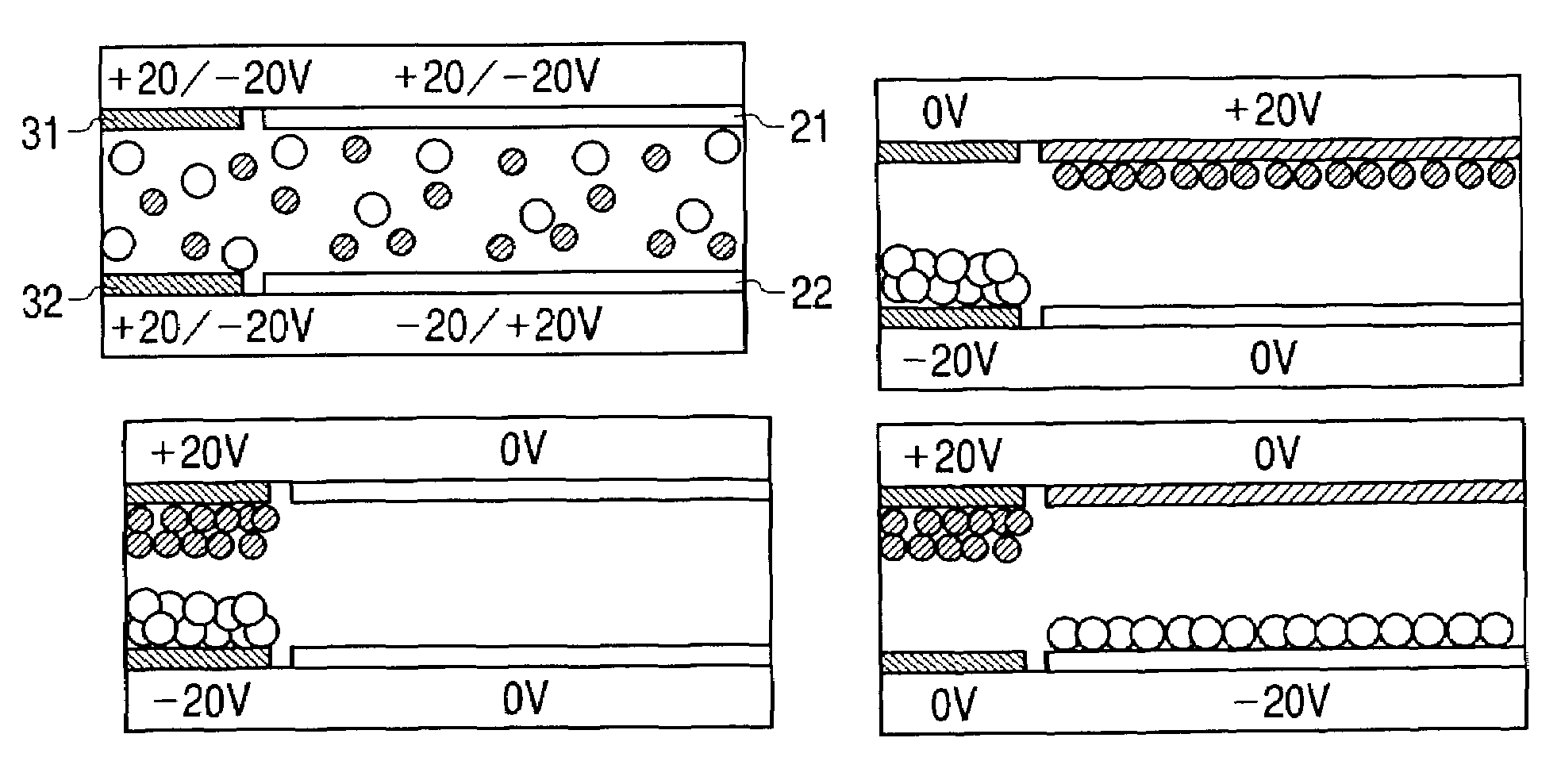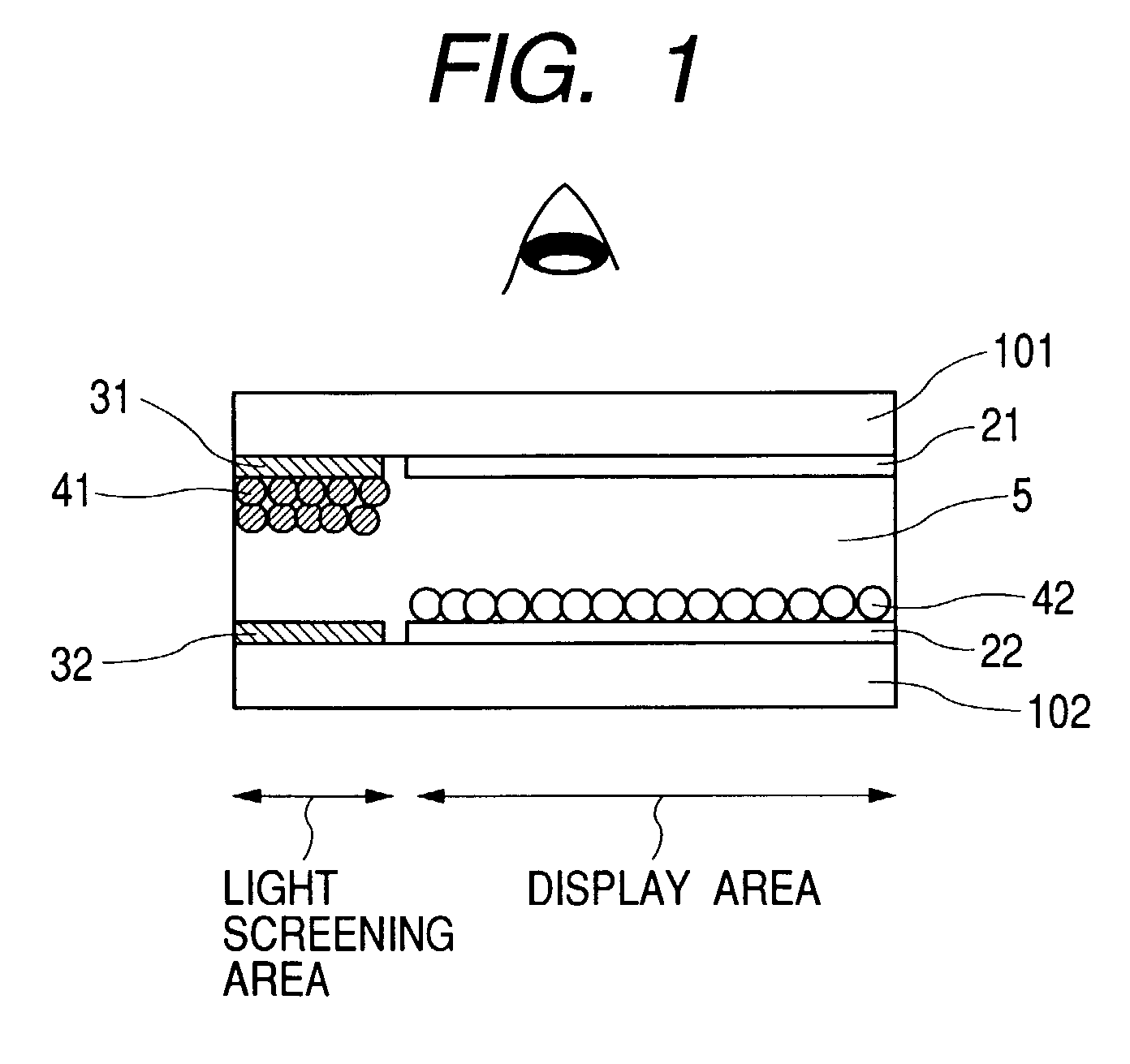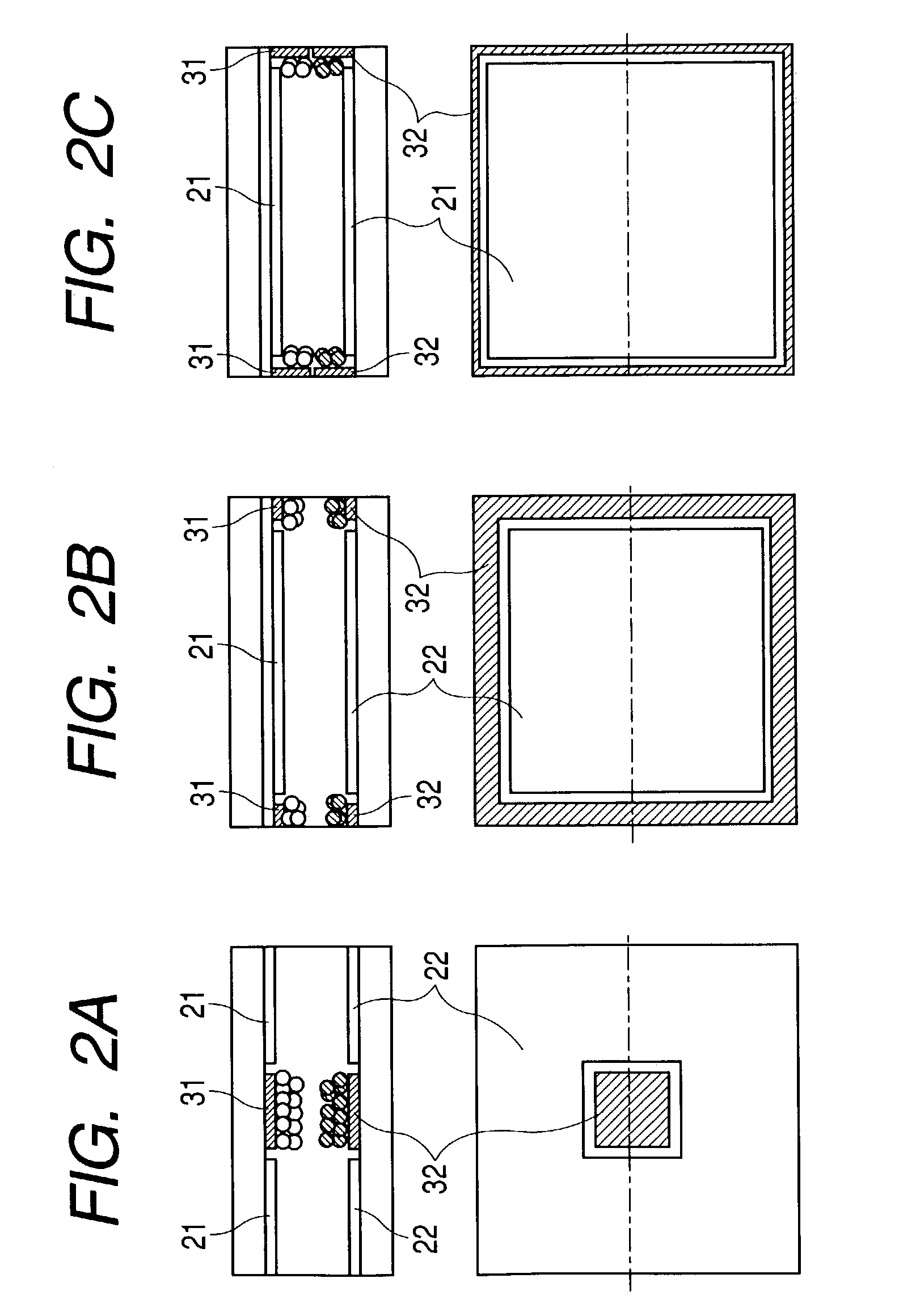Color electrophoretic display device
a color display and electrophoretic technology, applied in the field of color display systems, can solve the problems of not being said to have a sufficient display quality level, unsatisfactory brightness and color sharpness, and the task of eyesight, so as to improve brightness and color sharpness, and improve display quality level
- Summary
- Abstract
- Description
- Claims
- Application Information
AI Technical Summary
Benefits of technology
Problems solved by technology
Method used
Image
Examples
example 1
[0118]In this Example, described is an example of the structure, fabrication process and driving method of a color electrophoretic display-device in which pixels so structured that two unit cells are stacked (disposed in a stack) to constitute each pixel are arranged in a matrix. The display device to be fabricated have 100×100 pixels, and each pixel has a size of 200 μm×200 μm. FIGS. 14A to 14C present a cross sectional view (FIG. 14A) of areas corresponding to 2×2 pixels which are part of the display device, a plan view (FIG. 14B) along the line 14B-14B in FIG. 14A, and a plan view (FIG. 14C) along the line 14C-14C in FIG. 14A.
[0119]Partition walls 11 of 10 μm in width and 20 μm in height are disposed at pixel boundaries to divide the respective pixels and at the same time keep the distance between substrates constant. The unit cell structure in this Example corresponds to that shown in FIG. 2B. At the lower stage, a unit cell II containing an electrophoretic liquid in which two k...
example 2
[0134]In this Example, another example is described in regard to a color electrophoretic display device in which, like Example 1, pixels so structured that two unit cells are stacked (disposed in a stack) to constitute each pixel are arranged in a matrix.
[0135]The display device to be fabricated have 100×100 pixels, and each pixel has a size of 200 μm×200 μm. FIGS. 16A to 16C present a cross sectional view (FIG. 16A) of areas corresponding to 2×2 pixels which are part of the display device, a plan view (FIG. 16B) along the line 16B-16B in FIG. 16A, and a plan view (FIG. 16C) along the line 16C-16C in FIG. 16A.
[0136]The unit cell structure in this Example corresponds to that shown in FIG. 3B. At both the lower stage and the upper stage, a unit cell II containing an electrophoretic liquid in which two kinds of colored electrophoretic particles having different colors and charge characteristics have been dispersed, two display electrodes and two collection electrodes is disposed.
[0137]...
example 3
[0148]In this Example, described is a color electrophoretic display device in which pixels so structured that three unit cells are disposed in parallel to constitute each pixel are arranged in a matrix. The display device to be fabricated have 100×100 pixels, and each pixel has a size of 300 μm×300 μm. FIGS. 18A and 18B present a cross sectional view (FIG. 18A) of areas corresponding to 2×2 pixels which are part of the display device, and a plan view (FIG. 18B) along the line 18B-18B in FIG. 18A.
[0149]Each pixel in this Example is constituted of three unit cells of 100 mm in width and 300 μm in length which are disposed in parallel, and contains an electrophoretic liquid in which two kinds of colored electrophoretic particles have been dispersed. The respective colored electrophoretic particles are translucent polymer particles colored with dyes. A first cell (left side), a second cell (middle) and a third cell (right side) are filled with insulating liquids in which yellow positive...
PUM
| Property | Measurement | Unit |
|---|---|---|
| electrode potentials | aaaaa | aaaaa |
| electrode potentials | aaaaa | aaaaa |
| voltage | aaaaa | aaaaa |
Abstract
Description
Claims
Application Information
 Login to View More
Login to View More - R&D
- Intellectual Property
- Life Sciences
- Materials
- Tech Scout
- Unparalleled Data Quality
- Higher Quality Content
- 60% Fewer Hallucinations
Browse by: Latest US Patents, China's latest patents, Technical Efficacy Thesaurus, Application Domain, Technology Topic, Popular Technical Reports.
© 2025 PatSnap. All rights reserved.Legal|Privacy policy|Modern Slavery Act Transparency Statement|Sitemap|About US| Contact US: help@patsnap.com



